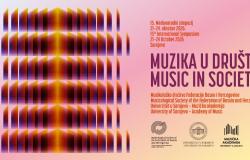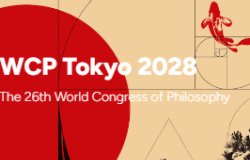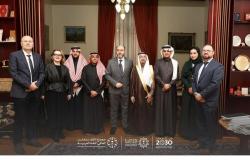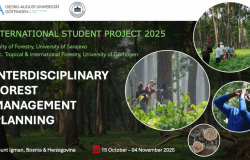In memoriam DAVID KAMHI

In Memoriam
DAVID KAMHI
8 October 1936 – 12 March 2021
By Dr. Ivan Čavlović, UNSA Prof. Emeritus
Prof. David Kamhi, doyen of violin art and pedagogy in Bosnia and Herzegovina, passed away at the age of 85. Except for his violin virtuosity, we will remember David Kamhi as a valuable participant in contemporary Bosnian history. He was active in the Jewish synagogue, Jewish past researcher, cultural attaché of Bosnia and Herzegovina in Spain, a co-founder of the Interreligious Council of Bosnia and Herzegovina, participant in talks on the past, present and future of his homeland of Bosnia and Herzegovina.
David Kamhi was born in Sarajevo on 8 October 1936, in the family of father Aron and mother Regina nee Levi. Until 1941, he lived in Sarajevo. After the German occupation, his father joined the partisans, and the mother with two small children, the older David and the younger Kik, with the help of a Muslim - Fahrija-hanuma Fadilpašić took refuge in Mostar. In Mostar, they were arrested and taken to Italian concentration camps on the islands of Lopud and Rab. After the capitulation of Italy (1943), he moved with his parents to the liberated territory in Lika, where David and his younger brother were placed in a partisan orphanage. After the liberation, the family returned to Sarajevo, and David enrolled in high school, junior music and high school, which he completed with great success (1957). After graduating from the First Lyceum the High School of Music, he enrolled at the Faculty of Law and the Academy of Music. In 1962 he enrolled and completed his violin studies at the University of Sarajevo Music Academy in the class of famous professors Aleksandar Segedi and Milan Tarbuk cum laude. In the Prof. Tarbuk’s class, he also completed his postgraduate studies (1964). From 1965 to 1967 he specialized in violin, chamber ensemble and violin and viola methodology at the “Peter Ilyich Tchaikovsky” Moscow State Conservatory, Department of David Oistrakh, violin in the class of Olga Kaverzneva, chamber music in the class of Prof. Zibcov, and the violin and viola methodology in the class of Prof. Kuznetsov. As part of his professional training, he stayed in Rome at the Music Academy” Santa Cecilia” (1970), as well as at the conservatory bearing the same name in the class of Prof. Pina Carmirelli (1970, 1973).
He began teaching at the High School of Music in Sarajevo, first part-time (1955), and then as a full-time teacher (1958-1963). He was elected a part-time assistant at the Music Academy (1962), and then became a permanent assistant (1963) to Professor Gino Sagrestan in the subjects Violin and Viola, and after the Moscow specialization he began working in the teaching of the Violin and Viola Methodology. In the same subjects he was elected lecturer (1969), then assistant professor (1971), associate professor (1977) and full professor (1984).
From 1965 to 2003, he was the head of the Music Academy in Sarajevo’s String Department on several occasions. He actively translated from Russian, and was one of four active native speakers of Judaeo-Spanish language - Ladino.
He retired on 5 September 2006, yet remained engaged in teaching for several more years.
A large number of students from the former Yugoslavia and Bosnia and Herzegovina graduated in his class, in full-time or master’s studies. Knowing his students today, we notice that many are engaged as violinists or violinists in the orchestras of Slovenia, Croatia, Serbia, Macedonia, Kosovo, and some European countries. Of course, in the orchestras of Bosnia and Herzegovina! Many of his students have won prestigious awards in competitions in Yugoslavia and abroad, of which the famous “Franjo Krežma” competition in Croatia should be mentioned. Some of his students are still active today: violist Igor Savin, violinists Hrvoje Tisler, Hana Kabiljo, Nino Verber, Zoltan Kiš, Stanislav Knežević, Igor Šimonji, Tase Stojanovski, Marija Čakan and many others from his 40 or so graduate and postgraduate students.
For the needs of violin teaching, he wrote several vocational papers in which he systematically discusses the problems of violin technique and interpretation among music high school and music academy students. Given the then scarce violin theoretical literature, then and today, it is worth mentioning two important professional works of Prof. Kamhi: On Psychophysical Aspects In Violin Methodology and On the Problem of Violin Practice. In the first paper, Prof. Kamhi introduces the young violin pedagogue to the individual treatment of each student and points out the importance of psychophysical training before the contact of the student with the violin. In the second paper, Prof. Kamhi analytically approaches all the main difficulties in practicing the violin on his own and gives examples from the literature on how these difficulties are solved in the musical text. In this sense, the solo sonatas and parts of J. S. Bach have been specially treated.
Another important aspect of Prof. David Kamhi’s pedagogical work is also his numerous professional lectures at music schools and academies in Bosnia and Herzegovina, Serbia and Croatia. In these lectures he dealt with almost all the problems that can be encountered in the teaching of the violin, and which, as we know, are always many, sometimes too many, from lesson organizing to the problem of intonation and violin tuning.
This type of work includes his work in commissions and juries in the field of numerous violin competitions.
Another aspect of Kamhi’s violin virtuosity are his artistic activities. He started his long-term concert activity and career in the later grades of the High School of Music. During his schooling at the Music Academy, he had a whole series of all-night, half-evening and solo performances at numerous musical events in the country and abroad. As one of the best Academy of Music students, he performed at non-federal festivals of music students in Sarajevo (1959), Ljubljana (1959), Belgrade (1959, 1963), Zagreb (1958), Skopje (1968), Katowice, Poland (1961). At those festivals, he performed several movements of Bach’s solo sonatas, the famous Chacon in D minor, sonatas by Mozart, Beethoven, Brahms, virtuoso compositions by Tartini, Paganini, Moses, Wienawski, Sarasate, as well as concerts for violin and orchestra by Bach and Pagan. During his master’s studies and training in Moscow, he enriched his repertoire with new violin compositions, e.g. Max Bruch’s Concerto for Violin and Orchestra in G minor, J. S. Bach’s Concerto for Violin and Orchestra in D minor, which he performed with various partners in Sarajevo, Mostar and Subotica. Criticisms from these performances were very positive, e.g. “The performer of the solo section at the last concert of the Sarajevo Philharmonic - D. Kamhi, performed his task musically, with a fine, clear tone, technically very accurate” (Oslobođenje, 1974) or: “Violinist David Kamhi in safe collaboration with pianist Jasenka Petrović quite safely, with a somewhat muffled tone, but musically leading the section, performed the Sonata in F major, Op. 24 Ludwig van Beethoven .” (Oslobođenje, 1982)
For the needs of Radio-Television Sarajevo, David Kamhi recorded Brahms’ Sonata in D minor, Mozart’s Sonata in C major and the Concert Symphony in E major, Beethoven’s Sonata in F major, Slavenski’s Song and Play and Bloch’s Nigun. These archive recordings were broadcast regularly while Radio-Television Sarajevo existed. He has collaborated with the Chamber Orchestra of the Music Academy in Sarajevo, the Sarajevo Philharmonic, the RTV Sarajevo Symphony Orchestra, the Mostar Symphony Orchestra and the Dubrovnik City Orchestra.
Already during his schooling, Kamhi David became actively involved in social work. And this will be one of his important activities for the rest of his life, which enriched his professional, artistic and pedagogical activities. At the Music Academy he was a member of almost all governing bodies and commissions, and outside the Academy he was a Board member of UKUD “Slobodan Princip Seljo,” a member of the Presidency of the Association of Teachers and Other Scientists of University of Sarajevo, President of the Association of University Teachers of the Socialist Republic of Bosnia and Herzegovina, a member of the Presidency of the Association of Music Artists of BiH, etc.
Prof. David Kamhi was extremely active during and after the 1992/95 war. Already in 1993, he became a member of the Council of the Presidency of the Republic of Bosnia and Herzegovina for Foreign Affairs, and then advisor and cultural attaché at the Embassy of Bosnia and Herzegovina in Madrid (1995/96). He was very active as a member and vice-president of the Cultural-Educational and Humanitarian Society “La Benevolencija” and the Jewish Community in Sarajevo, where he was the president of the Commission for Culture. He was one of the founders of the Interreligious Council (1997). From 1992 to 2016, Prof. Kamhi was the hazan (pre-prayer) of the Sarajevo Ashkenazi synagogue, and for a time he served as its rabbi. It is especially important that he systematically researched the culture and traditions of Bosnian Jews, especially in the field of researching the language of the Judeo-Spanish, which he was one of the few connoisseurs in BH and the former Yugoslavia. He announced his works in the field of language research at symposia (Sepharad ‘92 World Event in 1992 in Madrid) and published in the Bulletin, which he edited, and he published works in the field of Jewish music in the magazine for musical culture Muzika.
For his work he received numerous diplomas, recognitions and plaques, of which it is worth mentioning the Order of Labor with a Silver Wreath (1981) and the “Isa-beg Ishaković” award in the category "Cultural Heritage" (2012).
Prof. David Kamhi connected times with his origins and his work. Engagement in several vital fields is introduced by Prof. Kamhi into the world of deserving Sarajevans and Bosnians, as he himself said, and his violin art and pedagogy places him in the pillars of musical art and bearers of an artistic practice born of personal talent and family commitment to the spiritual and metaphysical art of music. Quite certainly, Prof. David Kamhi’s name remains historically important and with a significant place in the development of violin virtuosity and musical art. We will remember him as a humble man, but with a strong echo of his talent, will and dedication in the fields of his artistic musical practice. It will be difficult for us to find a worthy successor!







